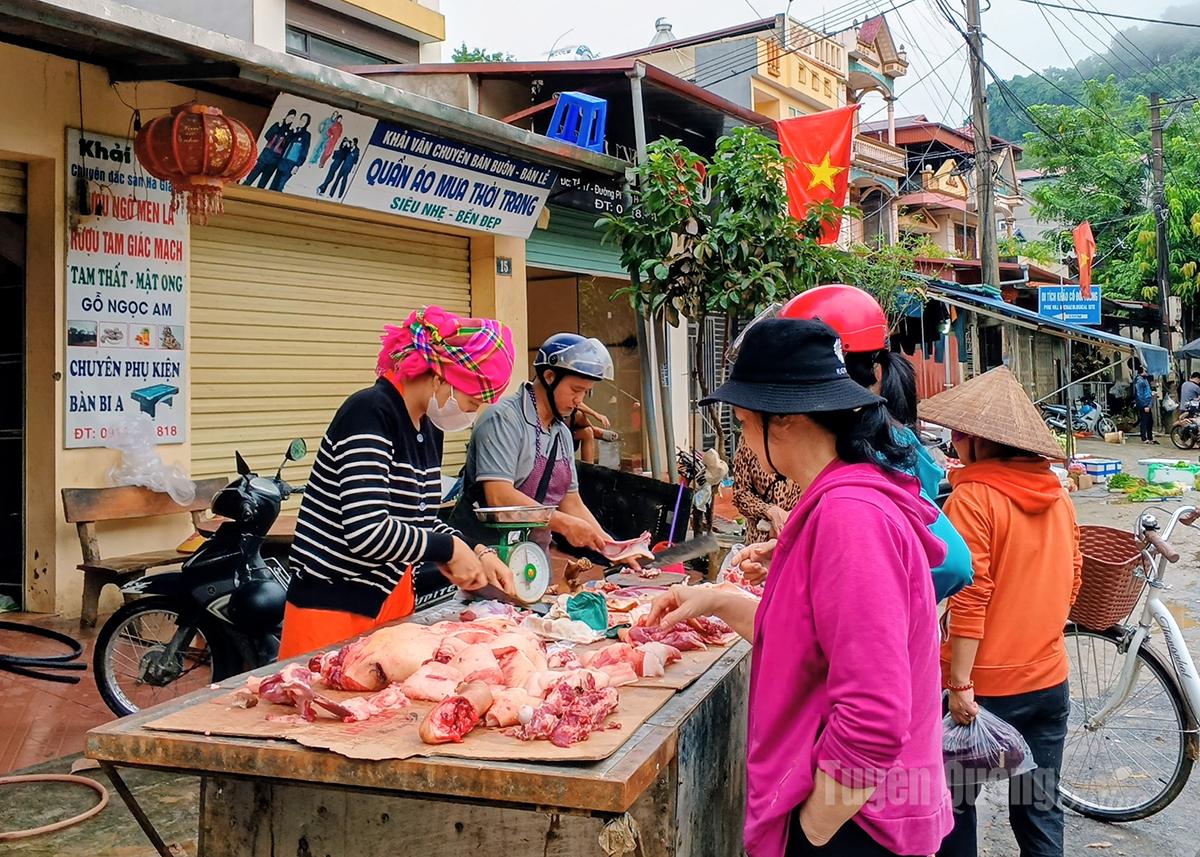Stabilizing the food market after the floods
After a week of heavy rains and flooding, recovery efforts across the province have been largely completed. Major roads have been cleared, local markets have reopened, and business activities are gradually returning to normal. The supply of fresh vegetables and essential food items continues to meet local demand.
 |
| At markets in Ha Giang Ward 1 and Ha Giang Ward 2, post-flood food prices have remained stable. |
In the first few days, the prices of vegetables and eggs rose slightly due to localized flooding and transportation disruptions, but stabilized soon after as supply chains recovered. Traders have been sourcing vegetables from Quan Ba commune to replenish local markets. Pork, fish, rice, instant noodles, cooking oil, and other essentials have remained stable in both price and supply.
The central Ha Giang market has been operating normally, while smaller markets such as Dien Luc and Minh Khai have reopened, though with limited stock. Cau Trang Market, however, remains closed due to severe flooding. At Phan Thiet Market, prices for several items such as malabar spinach, taro, winter melon, jute, and water spinach have risen slightly by about 20–30%.
Most vegetables are sourced from the An Tuong wholesale market and neighboring provinces such as Vinh Phuc and Hanoi. However, due to the impact of Storms No. 10 and No. 11, large areas of vegetable farms were damaged, making procurement difficult and pushing wholesale prices up by 1 to 1.5 times. This situation is expected to be temporary, with prices forecast to stabilize soon.
Alongside post-disaster recovery, local vendors have quickly resumed business. Authorities have intensified inspections to ensure food safety and prevent price gouging, protecting consumer rights. Functional forces have helped restore electricity and water supplies, clean up markets, and facilitate trade resumption.
According to the Department of Agriculture and Environment, as of October 5, more than 8,000 hectares of crops were affected, with nearly 1,000 hectares of aquaculture completely lost. The agricultural sector has directed localities to drain flooded areas, clear water channels, and guide farmers to replant short-term winter crops such as maize, potatoes, and vegetables to ensure food security.
Thanks to proactive efforts by local authorities and residents, the consumer market in Tuyen Quang province has quickly stabilized after the natural disaster.
Van Long – Mai Dung





READER COMMENTS